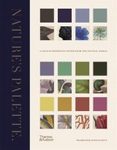About this book
This book offers hands-on guidance for addressing the specific challenges involved in conserving historical monuments, sculptures, archaeological sites, and caves that have been attacked and colonized by micro- and macroorganisms. Coping with Biological Grown on Stone Heritage Objects provides many case studies of removal of biological growth with practical advice for making the right choices. It presents detailed and updated information related to biocides and to alternative substances, features that will be valuable to dealing with these challenges. The author's goal is to provide access to information and offer the conceptual framework needed to understand complex issues, so that the reader can comprehend the nature of conservation problems and formulate her/his own views.
From bacteria to plants, biological agents pose serious risks to the preservation of cultural heritage. In an effort to save heritage objects, buildings, and sites, conservators' activities aim to arrest, mitigate, and prevent the damages caused by bacteria, algae, fungi, lichens, plants, and birds. Although much has been learned about these problems, information is scattered across meeting proceedings and assorted journals that often are not available to restorers and conservators. This book fills the gap by providing a comprehensive selection and examination of international papers published in the last fifteen years, focusing on the appropriate methods, techniques, and products that are useful for the prevention and removal of micro- and macroorganisms that grow on artificial and natural stone works of art, including wall paintings. Results on new substances with antimicrobic properties and alternative methods for the control of biological growth are presented as well.
Coping with Biological Grown on Stone Heritage Objects also emphasize issues on bioreceptivity of stones and the factors influencing biological growth and includes an outline of the various organisms able to develop on stones, a discussion on the bioprotection of stones by biofilms and lichens, a review of the main analytical techniques, and a section on bioremediation.
This volume will be a valuable reference for cultural heritage conservators and restorers, scientists, and heritage-site staff involved in conservation and maintenance of buildings, archaeological sites, parks, and caves.
Contents
Introduction
Basic Principles of Biology
Biochemistry Basics
Organisms Responsible of Biodeterioration
Ecology
Bioreceptivity of Natural and Artificial Stones Including Wall Paintings
Factors Influencing Biological Growth
Outline of Biodeterioration of Stone Objects
General Principles
Biofilms
Cyanobacteria, Bacteria, Microalgae
Fungi
Lichens
Bioprotection of Stones by Biofilms and Lichens
Mosses and Vascular Plants
Birds
Control Methods of Biodeterioration
Physical Eradication and Inhibition
Mechanical and Water-Based Control Methods
Biocides
Terms
Application
Types of Microbicides and Herbicides
Mechanisms of Antimicrobial Action
Stains After Treatments
Biocides No More on the Market, Biocides That Changed the Name or the Producer, Very Hazardous Biocides and Strange Information Reported in the Literature
Resistance of Organisms to Biocides
Toxicity and Legislative Regulations
Recolonization after Treatment and Maintenance Plans
Biocides’ Effects On Stones
Effectiveness of Biocides and the Persistence of Their Effect
Novel Biocides and Alternative Methods For the Control of Biological Growth
Prevention of Biodeterioration
Bioremediation
Scientific Examinations
Assessment of the Biological Growth and Its Effect on Stones
Assessment of the Efficacy of Control Methods
Customer Reviews
Biography
Daniela Pinna has been working as a biologist at the Italian Cultural Heritage Ministry since 1987. Since 2011, she has been lecturing on biodeterioration and degradation of bioarcheological materials at Bologna University (International Degree Course Science for the Conservation-Restoration of Cultural Heritage). She was involved in the European Projects EU-ARTECH (Access Research and Technology for the Conservation of the European Cultural Heritage-2004-2009) and CHARISMA (Cultural Heritage Advanced Research Infrastructures: Synergy for a Multidisciplinary Approach to Conservation/Restoration-2009-2014). She has published two books and several articles on those subjects. She is editor of the book Scientific Examination for the Investigation of Paintings: A Handbook for Conservators-Restorers (Centro Di, Firenze, 2009). Moreover, she is involved in the activity of CEN/TC 346. CEN is the European Committee for Standardization and TC346 is in charge for standards related to conservation of cultural heritage. Her areas of specialization include biodeterioration of heritage objects, prevention and treatment of biodeteriogens, testing and evaluation of conservation products, and the control of treatment efficacy and durability in the field of stone, mortar, mural paintings, and polychrome sculpture conservation. She graduated in Biology from Padua University, Italy.




















![Handbuch Integriertes Schädlingsmanagement in Museen, Archiven und Historischen Gebäuden [Handbook of Integrated Pest Management in Museums, Archives and Historic Houses]](http://mediacdn.nhbs.com/jackets/jackets_resizer_medium/26/265856.jpg?height=150&width=98)













